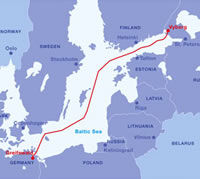New Study from Ceresana Research: Continued Growth of the PVC Market
polyvinyl chloride continues to be one of the world’s most crucial plastics. As one of the oldest and most used products of the plastics industry, PVC came under attack 20 years ago by environmentalist groups. After numerous scientific investigations and improvement measures, the industry calmed the situation down: The environmental aspects of this durable and fireproof material are now often looked upon positively, the relatively minimal need for oil is also considered to be advantageous. A new market study from Ceresana Research shows that the PVC branch can expect to see continued growth.
Constant Upward Trend
Last year, the PVC world market reached a volume of 34 million tons, whereas in the year 2000 demand had barely amounted to 24 million tons. However, the 5% annual rate of growth seen in the past will probably not continue. Nevertheless, Ceresana Research expects global PVC demand to increase by an average of 2% per year, despite the precarious financial crisis. The comprehensive study explains through individual regions and countries, why PVC demand is forecasted to total more than 40 million tons by the year 2016.
PVC’s Uniqueness
While Middle Eastern nations are implementing enormous expansions in production capacity for many other plastics, such as polypropylene and polyethylene (HDPE, LDPE, LLDPE), with PVC they are not able to profit as much from their abundance of raw materials. The reason for this: PVC consists of only 43% of the petroleum/natural gas derivative ethylene. For the most part, PVC is made up of chlorine, which can be obtained in a multitude of regions from the extensive supply of salt. PVC is particularly interesting to other world regions for this very reason. This study from Ceresana Research analyzes demand divided by application area, as well as production, capacities, revenue, and flow of trade in 61 countries, from the years 2000 to 2016.
Growth in the Asian Pacific Region
The majority of PVC manufacturers are located in China, whereby these often represent small, aged acetylene-based factories. Nevertheless, an increased number of modern production facilities with capacities of 400,000 tons or more are being constructed throughout the People’s Republic. Correspondingly, the trade balance is also changing: China is constantly becoming less dependent upon imports, and by 2009 PVC export amounts are expected to surpass import totals. PVC manufacturers in India are profiting from rising domestic demand. In contrast, the United States is dealing with excess capacity: Production capacity decreases in the amount of 2 million tons are anticipated over the next several years, because otherwise no economical degree of efficiency will be reached.
The Construction Industry is Propelling PVC demand
Of the nine primary application areas, whose development is extensively analyzed in the market study over the short- and long-term, the majority of global PVC demand currently originates from building construction and civil engineering, that is to say demand for pipes (38%) and for window profiles (20%). Other important areas of application include for example, films and sheeting, cable insulation, flooring, and shoes, as well as medical products, such as intravenous drip lines. However, substantial differences exist between the various regions. Demand for windows is rising considerably in Russia, for example, while in Asia pipe production is playing a vital role for PVC.
The Most Comprehensive Study Worldwide
The Polyvinyl Chloride Market Study presents quintessential regional and national data for this growing market on more than 850 pages, and includes 450 graphs and tables. It offers 122 company profiles for current and future manufacturers around the world.
Most read news
Topics
Organizations
Other news from the department business & finance

Get the chemical industry in your inbox
By submitting this form you agree that LUMITOS AG will send you the newsletter(s) selected above by email. Your data will not be passed on to third parties. Your data will be stored and processed in accordance with our data protection regulations. LUMITOS may contact you by email for the purpose of advertising or market and opinion surveys. You can revoke your consent at any time without giving reasons to LUMITOS AG, Ernst-Augustin-Str. 2, 12489 Berlin, Germany or by e-mail at revoke@lumitos.com with effect for the future. In addition, each email contains a link to unsubscribe from the corresponding newsletter.
Most read news
More news from our other portals
Last viewed contents

Münzing Liquid Technologies GmbH - Rottweil, Germany
Emerson's PlantWeb® architecture helps Brazilian chemical plant boost production and quality

Sumitomo Chemical starts production at its electronic materials JV in Changzhou National Hi-Tech District
Biomass the new petroleum?





























































